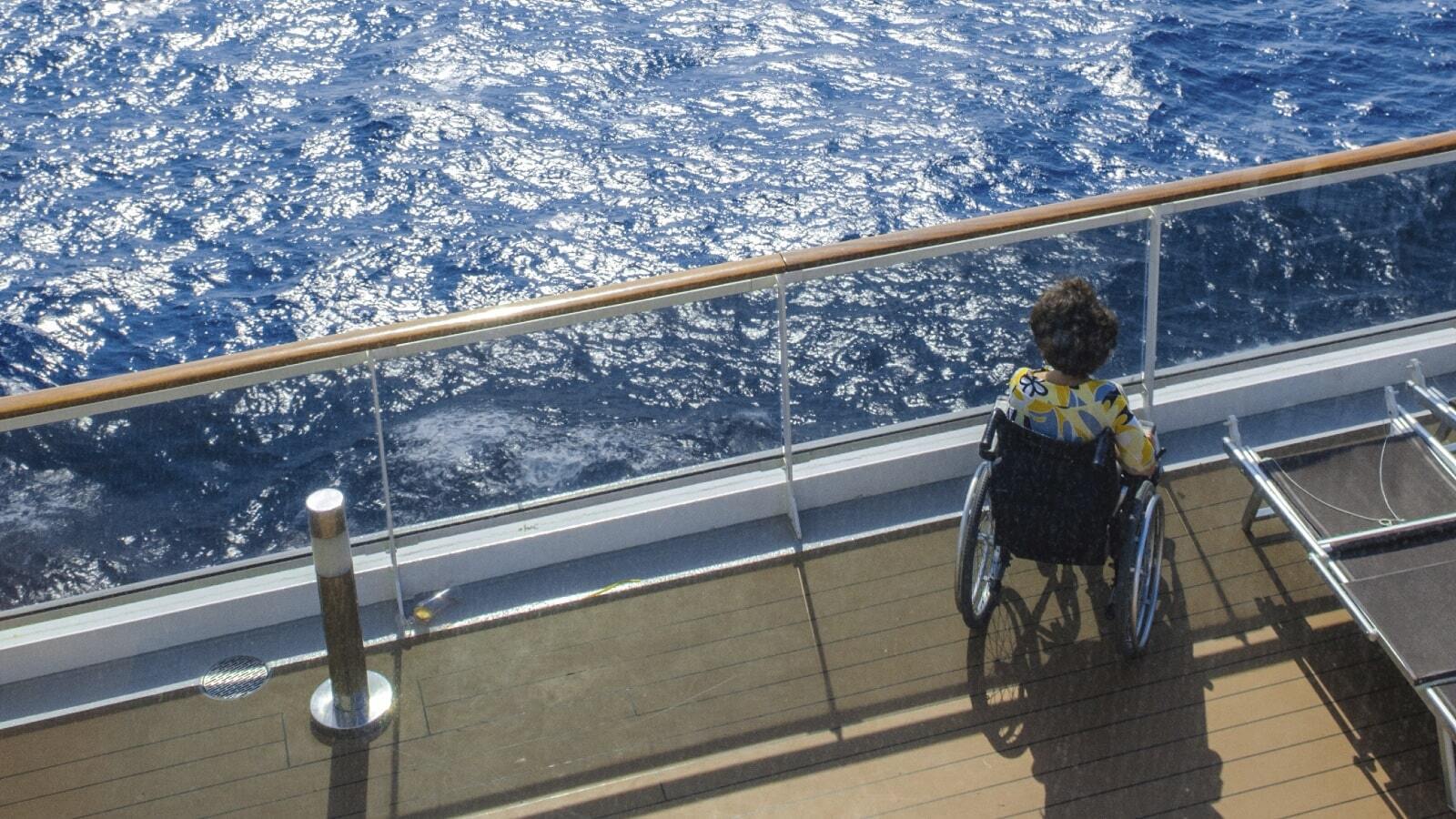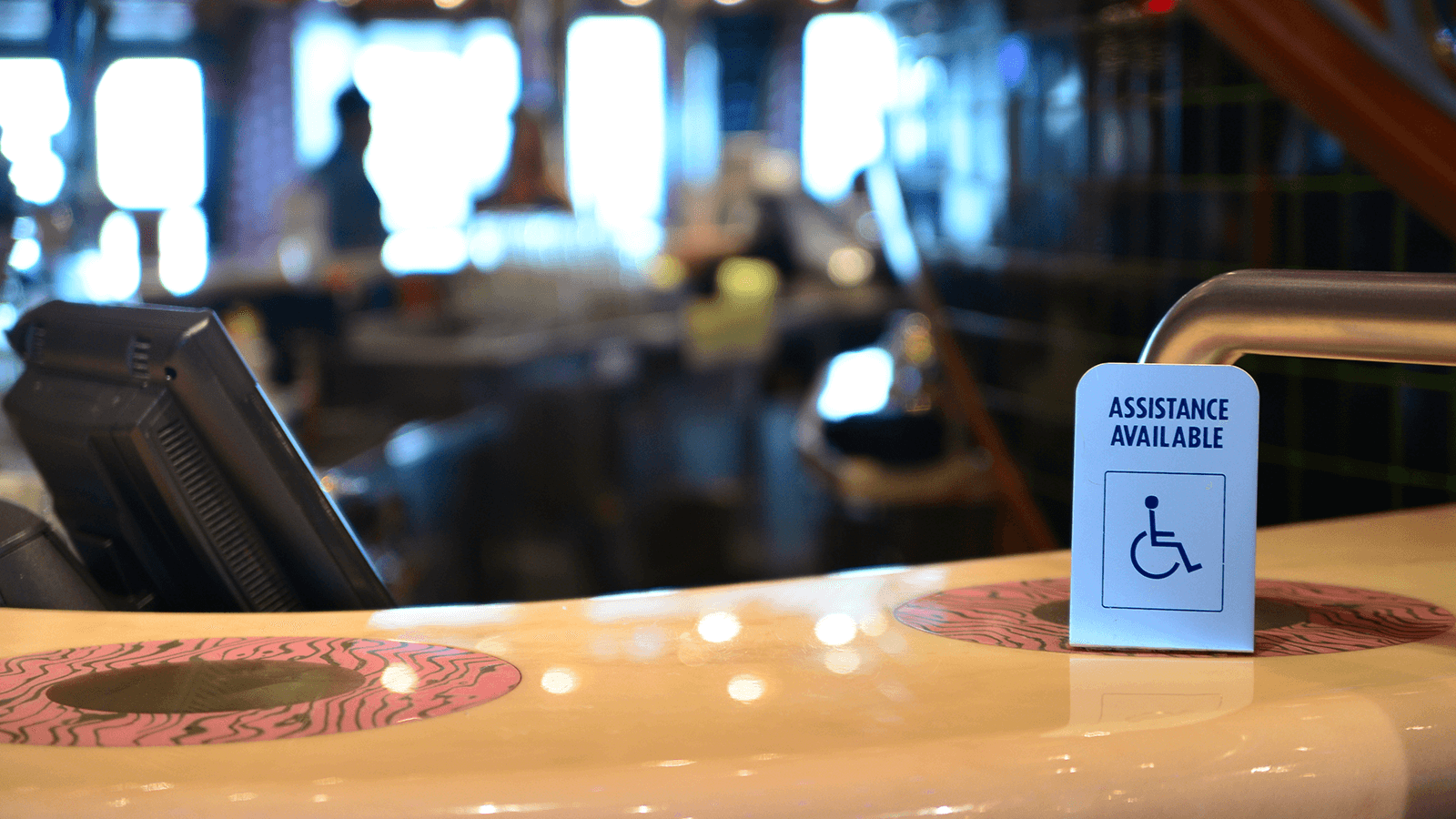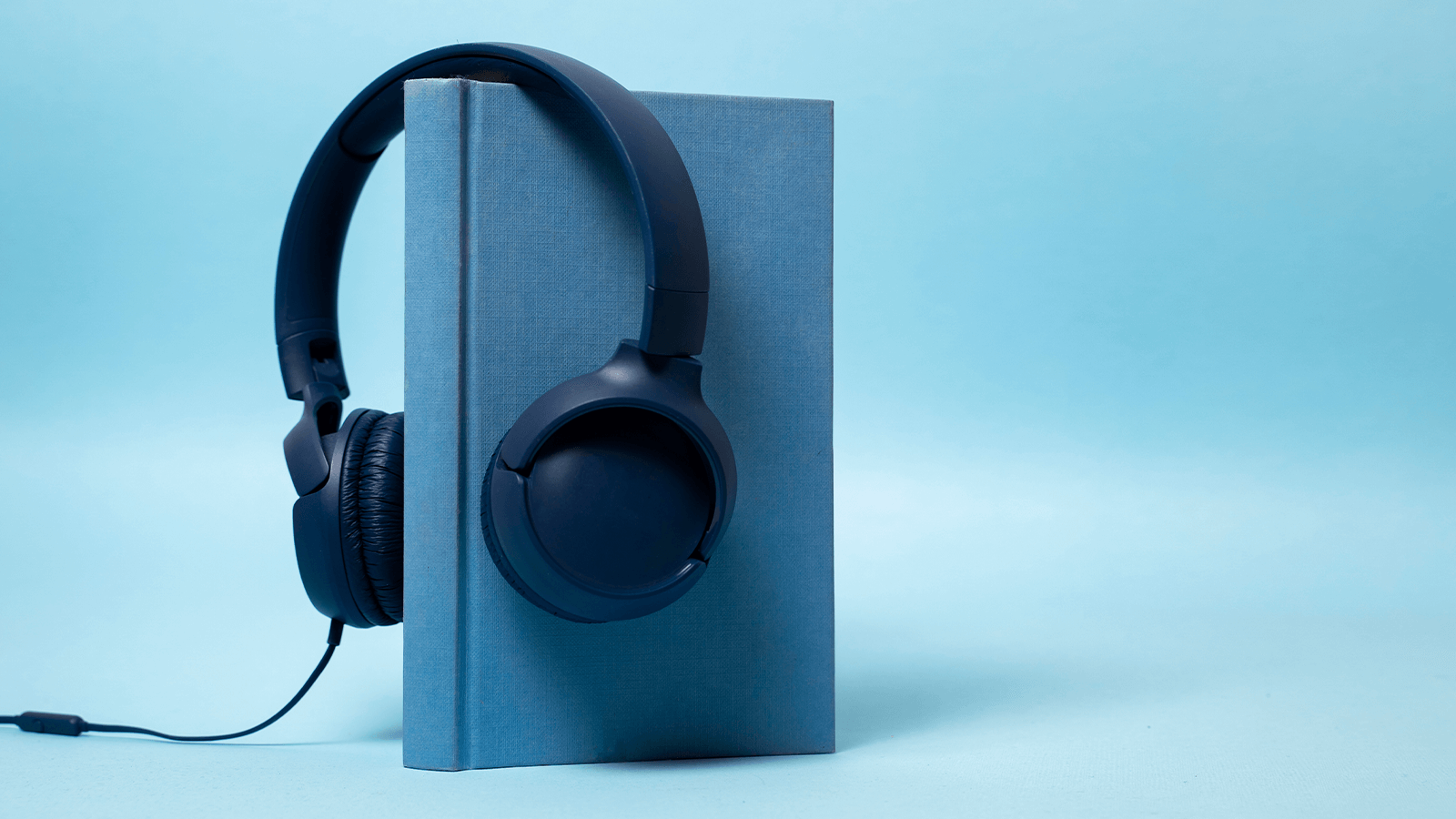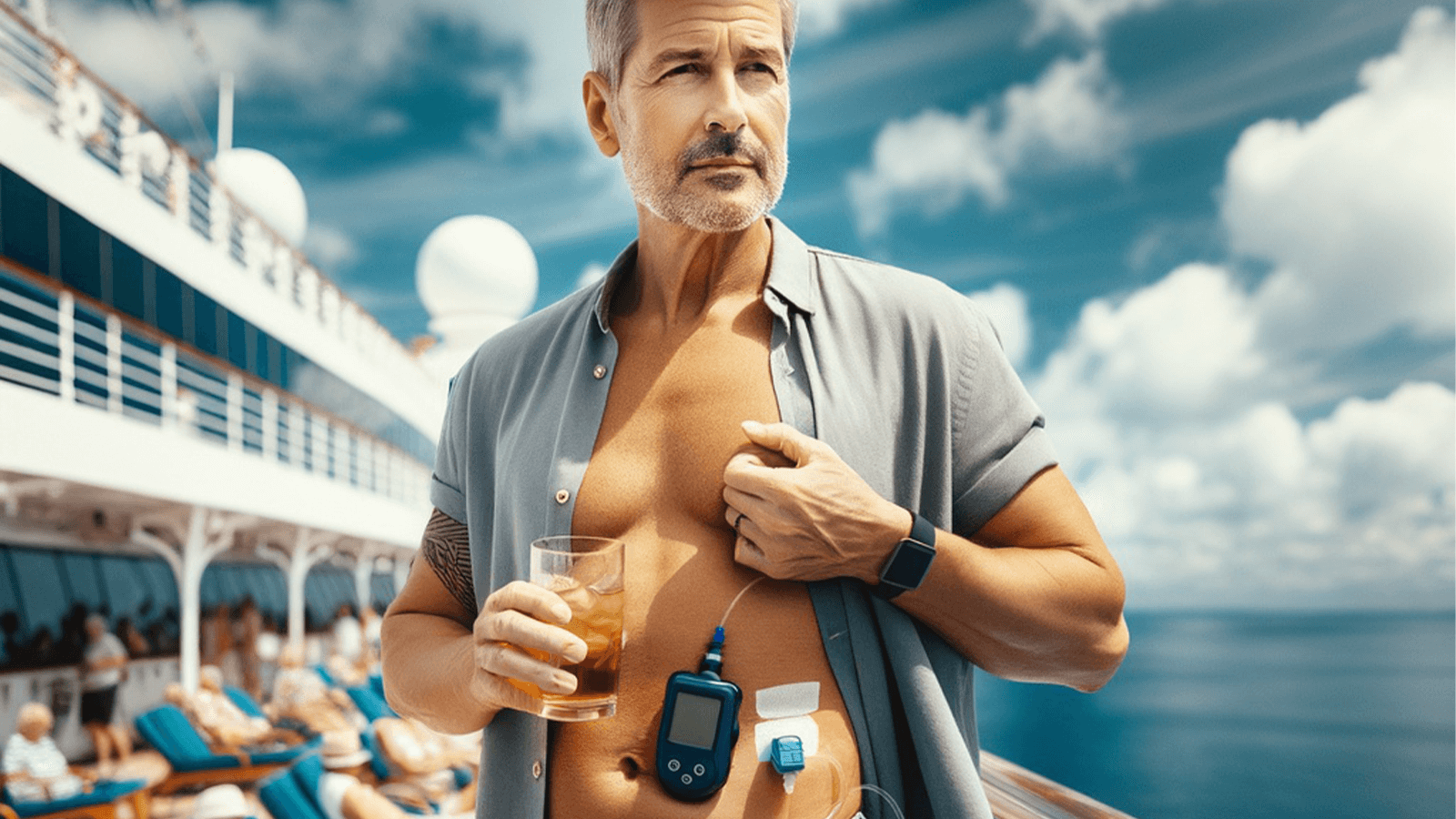Has improved accessibility made cruise fit for all?
Becoming ever more accessible is a key ambition within the cruise industry. Numerous cruise lines have stepped up and worked towards being fit for all. So we ask the question – how have cruise providers improved accessibility, and where do the challenges still remain?
The world has changed. Considerable efforts are currently undertaken – by both society and business – to ensure that our contemporary world is fully accessible to everyone. The transport sector has been spearheading that assault on biased ableism for some years now, and at the helm of the progress is the cruise industry.
It would be modest to suggest that cruise lines are frequently admired for its noteworthy willingness to innovate and cater for passengers with disabilities. In recent years, many older ships have undergone impressive refits to facilitate wider access, while upcoming ships now have disability requirements incorporated at the drawing board.
Combined, these strategies have already yielded the positive reputation that cruise is informed, welcoming and disability-friendly. Certain advocators for those with health conditions often proclaim that societal efforts create an "inclusion in an illusion" mantra, but the cruise industry defies such criticism.
On cruising, Chelsea Bear – a content creator who has cerebral palsy – said: “As someone with a physical disability, I personally think cruises are the most accessible way to travel.”
Chelsea isn’t alone in her opinion. In the last five years, 12 per cent of disabled adults have embarked on a cruise. That’s two per cent more than the general population, while feedback from disabled cruisers looks increasingly promising.

In the 2022 Department for Transport Accessibility Survey, 89 per cent of disabled maritime passengers reported being satisfied with the assistance received while travelling.
More recently, in the 2023 State of the Cruise Industry survey by the Cruise Lines International Association (CLIA), 82 per cent of cruise travellers who have limited mobility or are travelling with someone who does, say that a cruise is the only travel option for them.
A CLIA spokesperson said: "Cruise is accessible to a broad range of travellers, including those who would otherwise be unable to travel due to physical, neuro, sensory or other challenges. A holiday at sea is considered an essential and key factor in many travellers’ lives, with cruise lines fulfilling the requirement of travellers and those who are sailing with others with mobility challenges.”
Satisfaction levels are also rising and, thanks to the general shift towards an older demographic, so too is the proportion of disabled. Our sister publication, CTN, investigated accessibility provision within cruise back in 2021, and a further two million disabled adults have registered in the UK since.
Disabled individuals now comprise 24 per cent of the UK population. As the client base seeking accessible options grows, it makes absolute business sense for cruise lines to meet increasing accessibility requirements in addition to demonstrating goodwill and inclusivity to disabled passengers.

Jon Fletcher – CEO of the Wheelie Good Travel Company – told us: “Cruise is making great strides in its accessibility and inclusivity, which is why more disabled travellers are being attracted to cruising as a viable way of exploring the world. For cruise lines, being more accessible is not just ethical and inclusive. It can also be a very commercial, savvy move.”
Rising demand from disabled passengers combined with increasing provision for accessibility on board cruise ships could prove a match made in heaven.
A recent survey by GfK found that potential income from passengers with access needs, and their companions, currently equates to £149.43 billion. Meanwhile, it is clear that disabled passengers are as keen to see the world as everyone else, eagerly exploring the available options. There's demand and supply, it's about getting things right.
Accessibility provision in cruise – an evolution
The cruise industry has been steadily progressing towards full accessibility with initial efforts focused on catering for mobility issues. From assistance at boarding to widening doorways as well as delivering more spacious cabins, adapted wet rooms, lowered sinks and reserved seating within ship restaurants, theatres and cinemas, cruise providers have actively aimed to facilitate ease of passage throughout their fleets.
Royal Caribbean (having recently pushed the boat out with Icon of the Seas) stipulates that all doorways must be at least 32 inches wide to allow wheelchairs through while staterooms must possess a minimum five-foot turning radius within.
The Covid-19 pandemic hit the cruise industry like a wrecking ball, but it also brought the welcome addition of touch-free access via automatic doors, which was well-received by the mobility community.
Some lines, including Holland America Line, Marella Cruises and P&O, go further still, assigning a member of staff to each disabled passenger on board. Through most cruise operators, bringing a mobility device and/or an assistance dog aboard is usually possible.
In addition to mobility provision, the blind or visually impaired can usually request an orientation tour of their chosen ship while it is common to now find braille signage situated alongside doors and elevators. Braille is also found upon restaurant menus. Elsewhere, a cruise ship library will usually stock an audio-book collection.

Meanwhile, the deaf or hard of hearing can make use of hearing loops and assistive hearing systems fitted throughout a ship as well as portable room kits, cabin teletypewriters and visual-tactile systems. Captions are frequently provided on televisions and in safety videos while sign language interpretation – usually via ASL – is increasingly common.
More recently, as the definition of inclusivity expands, cruise lines have also tried to ensure they are just as suitable for those with non-visible disabilities. Those with autism and diabetes can cruise without the concerns they may have had in previous years.
Among an array of options, autistic individuals can request priority check-in, quieter muster points during safety drills, low-volume entertainment, dietary modifications, respite sessions and private activities. Autistic children can enjoy tailored toys while guided tours of the ship serve special interests and boost camaraderie among families affected by autism.

Passengers with diabetes can tap into cruise’s accessibility efforts too, including healthier catering, early access to menus, insulin refrigeration, access to onboard medical teams and even a spare sharps bin if required.
“The whole travel industry is increasingly aware of less visible disabilities. It has to be remembered that no two disabled guests are the same and each may have very individual needs. Some cruise lines have become quite innovative,” said Jon Fletcher, CEO of the Wheelie Good Travel Company.
CLIA have also noted the advances in accessibility provision. A CLIA spokesperson said:
"The number of onboard features across the global cruise fleet – such as accessible cabins, automatic doors and wider corridors – plus wheelchair-accessible and mobility-friendly shore excursions, is increasing.
"That is helping to meet the needs of cruise travellers who have limited mobility, or who are travelling with someone with limited mobility. Similar results are showing up related to sensory and cognitive considerations. This is one reason that cruising appeals to group and multi-generational family travel; there is something for everyone on modern cruise ships.”
Fit for all? Improving accessibility beyond the cruise ship
Within cruise, the ongoing push for full accessibility is highly commendable. In return, many disabled passengers are reciprocating with glowing reviews, bookings for future cruises and recommendations going out across the disability sphere.
However, if cruise is truly honest, it will admit that numerous problems still frustratingly reside. This is especially relevant to niche cruises such as river cruise ships, where smaller dimensions limit accessibility potential. Meanwhile, expedition cruises are primarily marketed at those capable of being more active.
Currently, the largest and newest cruise ships are closest to being fit for all, but not every base has yet been covered. Having widened doors and alternative dining options are great steps in the right direction but, even now, it seems that a cruise ship’s accessibility is limited by factors beyond the physical vessel itself.
For example, it is not unheard of for passengers with mobility issues to find themselves stranded onboard their cruise ship at certain locations. This may be because a particular port is not adequately prepared for meeting accessibility needs or a tender – needed for disembarking – cannot offer a ramp.

Granted, in these scenarios, cruise lines often go above and beyond to offer their disabled passengers special alternatives. This may include a spa treatment at a heavy discount rate or being able to enjoy a quiet lunch in an opulent onboard restaurant.
While these offerings are usually highly appreciated, it is always possible that feelings of frustration and, more importantly, segregation can arise in situations like these, opposing the aims of accessibility.
Even when passengers with a disability can go ashore, another difficulty can be a lack of ship-sponsored excursions that are wheelchair-accessible or take into consideration less obvious issues.
A bustling tour may be stressful for someone with autism while a whistle-stop lunch may prove too rushed for a diabetic. Of what choice does exist when it comes to accessible tours ashore, there are restricted and expensive choices that are often focused primarily on mobility; to the detriment of anyone with a more subtle condition.

Jon Fletcher – CEO of the Wheelie Good Travel Company – said: “We have to recognise that disabled guests, like everyone else, want to explore the ports of call. All too often this can be made both difficult and prohibitively expensive on the rare occasion an accessible excursion is available.
"Cruise lines and port agents should consider working with excursion providers that are accessible and affordable. Virgin Voyages and Celebrity Cruises use new technology to make it easier for disabled guests to go ashore. Virgin Voyages have an adjustable gangplank while Celebrity Cruise Line have a wheelchair accessible tender on their newest class of ship.”
Meantime, what disabled cruisers can take heart from is the knowledge that the cruise industry is aware of these existing niggles. Speaking at the 2023 MedCruise General Assembly in Corfu earlier this year, Michele Bosco, Princess Cruises' product and operations manager – said: “I think there's more to improve from the shoreside point of view at the moment, rather than on board.”
“If cruise lines involved a cross-section of disabled travellers at design, I believe cruise could be even closer to being fit for all,” explained Jon Fletcher.
As accessibility advances in cruising, it is clear the focus needs to remain on cruise ship design and then also beyond cruise ships themselves including disability-friendly ports, examining amenities onboard tenders as well as pairing up with excursions willing to cater for everyone.
Additionally, by liaising with external agencies on outstanding issues with the same commitment displayed thus far, cruising being able to claim it is truly fit for all looks to lie just beyond the horizon.
